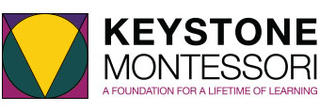Adolescents (12 to 15 years)
The object of education is an entity in the process of becoming a human being. Education should not focus on special functions, faculties, or skills, but on the whole personality. -Maria Montessori
 The Montessori adolescent program is the culmination of the child’s experience as a Montessori student. More and more Montessori schools are offering this unique program as it is designed to meet and serve the needs of children during this period of tremendous personal growth and change.
The Montessori adolescent program is the culmination of the child’s experience as a Montessori student. More and more Montessori schools are offering this unique program as it is designed to meet and serve the needs of children during this period of tremendous personal growth and change.
Students are expected to bring a high level of independence and self direction, a comfort with collaborative work, and a love of learning for learning’s sake. They treat each other with respect and are comfortable with the knowledge that each person has different strengths and challenges. The manipulative materials of the elementary level are rarely present, as adolescents have moved beyond their applications and are now confidently using the more adult learning techniques of reading, discussion, and application to a task.
Montessori adolescents continue to learn without letter grades or gold stars. Conversations with the teachers and written remarks on papers compliment the most important barometer of success: the student’s own knowledge that he has put forth his best effort. The mixed-age class supports each student in applying themselves in a unique way to a group experience. Longer blocks of time allow for subject areas such as Humanities, Occupations/Sciences, and Creative Expression, as well as Latin & Spanish. Students also receive music & art specials, as well as volunteer their time regularly, at either a local ranch or senior living center.
 Students work as a group to find ways of making money, a direct experience of the economic connections in a working society. The success of earning money is a strong source of validation for their skills and contributions. Much of their money making efforts goes towards to their end of the year trip.
Students work as a group to find ways of making money, a direct experience of the economic connections in a working society. The success of earning money is a strong source of validation for their skills and contributions. Much of their money making efforts goes towards to their end of the year trip.
The positive sense of belonging is nurtured through responsibilities that adequately match the capabilities of the adolescent, and through work that has a clear purpose. In response to their stronger social need for belonging and a growing ability to collaborate within a large group, each person is expected to contribute his best efforts to the classroom community, or task at hand.

